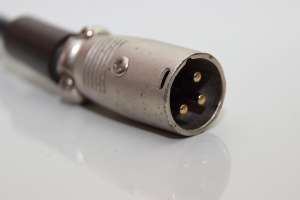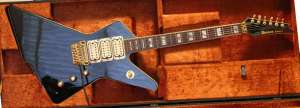The world of audio cables and connectors is challenging to understand. There are many various cables that are used for specific purposes, and they are not interchangeable.
If you want to work with them, it helps to understand the differences and what their functions are. TS and TRS cables are some important cables to understand, and there are a few distinctions between them.
TS cables have two connections, called the tip and the sleeve. One connection is live, and one ground. TRS cable have three connections, the tip, ring, and sleeve. These cables have two live signals and ground. TRS cables send balanced or stereo signals. TS cables send unbalanced, mono signals.
Understanding TS and TRS cables (including their distinction and their functions) is critical for everyone who works with audio cables. This could be for home audio, car audio, professional audio, recording and studio gear, or even for musicians and sound engineers.
Let’s identify and compare TS and TRS cables to better understand them.
What Are TS Cables?
When learning the differences between TRS and TS cables, it is important to first identify each cable individually, to better understand the comparisons that can be made between them. With that in mind, let’s begin with TS cables.
The TS in ‘TS cables’ stands for Tip-Sleeve. The tip and the sleeve of the cable are two connections that can be made within one cable.

Most TS cables are comprised of a signal wire and a ground connection. Some TS cables (such as speaker cables) have two signal wires and a ground connection.
TS cables are usually used for mono audio connections (such as those used for most musical instruments). They are also used to send a single side of a stereo instrument (such as a keyboard or stage piano).
If you have ever seen a guitar cable, you have seen a TRS cable. Most of these cables are made with ¼” connectors and are used for this type of function.
Some TS cables are made with 3.5mm connectors and can be used for consumer microphones as well as certain audio connections.
What Are TRS Cables?
As we have already learned, the best way to approach learning about these different cable types is to learn about them individually. We have covered the basics of TS cables; now, let’s learn the fundamentals of TRS cables and what they are used for.
TRS cables carry a stereo signal or a single balanced signal. The ‘TRS’ here stands for Tip-Ring-Sleeve. The tip, the ring, and the sleeve that TRS cable connectors are comprised of are each able to send an independent signal.

The main use of this type of cable is to send and receive balanced audio signals. This is due to the fact that one of the connections can be used as a ground connection, while the other two wires within the cable are used to carry a balanced signal.
TRS cables have two signal wires that can be used to carry a balanced audio signal, or they can be configured to transmit a stereo signal. If TRS cables are used in this way, each stereo signal is unbalanced, but they are still grounded due to the ground wire within the cable.
This type of cable is very useful for sending a balanced signal, which allows for far less interference and enables the signal to be carried significantly further distances.
The ability to send a stereo signal down once the cable is is also a tremendous advantage in certain circumstances.
These cables can be made with ¼” connectors or 3.5mm connectors. They are commonly seen in both configurations.
TRS cables with a 3.5mm jack are what are commonly known as AUX cables and are usually used for transmitting audio as music through devices, but they can be used in a variety of ways.
¼” TRS cables are common for musical instruments, studio gear, live sound, pro audio systems, and even for running electrical signals and programmable signals for hardware such as stage lights.
TRS cables have the same functionality as XLR cables, but they use different connectors and are usually slightly less stable overall.

How To Identify TRS And TS Cables
Now that we have identified the functionality of these different cable types, it is important to be able to identify these cables just by looking at them. Anyone who works with audio cables regularly must not get TS and TRS cables confused, so how do you identify these cables?
The easiest way to identify these two types of cables is by the rings that are visible on the shaft of the connectors.
Every TS cable has only one black band on the connector, while TRS cables have two black bands on the connector.
These black bands are tiny insulators that separate the connection between wires in the connector.
The TS cable has two connections, the signal, and the ground, which means the connector has two segments, the tip, and the sleeve, which means it only has one black ring to separate the sections of the connector.
The TRS cable has three connections, two signal connections, and one ground, which means it has three sections in the connector that are separated by the black bands on the connector shaft.
The tip, the ring, and the sleeve are so-called because of the segments that are created by these black bands. The tip is one section, and the two black bands make the connectors look like it has a ring in the middle, and the rest of the connector is the sleeve.
At the end of it, TRS cables always have two black bands, and TS cables always have one. This is true for all types of jack connectors, including 3.5mm and ¼” connectors for both cable types.
TRS vs. TS Cables
Now that we have identified both cable types and what they look like, it is now important to directly compare each cable to learn more about how they function and perform, as well as what their uses are in comparison to one another.
Let’s take a closer look at the important aspects of TRS and TS cables to compare them more closely, including the pros and cons of each cable type.
Construction
TRS and TS cables are both made in very similar ways, and they can both be made with connectors that look almost identical.
The construction of these cables can vary depending on the quality they are made to, but both TRS and TS cables look very similar and fit into input and output connectors that look the same as well.
TRS and TS cables can be made with 3.5mm and ¼” connectors.
Functionality
The most important difference between TRS and TS cables is the functionality of these cable types. The type of connections that these cables can be used for directly determines their uses and how they can be used in specific situations.
The main difference is that these cables have either two or three connection points. TRS cables have two live connections and a ground, while TS cables have only one live connection and a ground.
This means that they function in very different ways.
TRS cables can be used to send balanced signals, which involves using one signal wire to send the signal, and the other to send the same signal inverted.
This means that any noise that is collected along the signal path from outside sources is canceled out by the time the cable terminates, which in turn, produces a very clear and useable signal on the other end.
Sending a balanced signal allows the TRS cable to be used over very long distances, and it can even carry a small electrical charge that can either be used to boost the signal or send an electrical trigger to hardware.
This functionality provides extremely clear signals for recording and for audio projection and is used by most professionals for audio systems and recording systems.
These cables can also be used to send a stereo signal down one cable, which is infinitely useful over short distances.
By contrast, TS cables have only two connections, only one of which is a live signal connection. This means that TS cables can only be used to send mono signals, which is not as useful as a balanced signal and is susceptible to picking up noise.
These cables are usually used to send a single audio channel, such as an instrument like an electric guitar, and can only be used over short distances due to potential signal loss as well as their lack of shielding.

Pros And Cons
An important comparison to make between TRS and TS cables is the pros and cons of these cables, which are crucial to understand if these cables are to be used well and used in the right contexts.
The pros of TRS cables include the following:
- TRS cables can send a balanced audio signal
- TRS cables can be used to send a stereo signal
- TRS cables can send electrical signals
- TRS cables can send audio signals over very long distances
- TRS cables produce very clean connections
- TRS cables cancel out RF interference and signal noise in balanced signals
The cons of TRS cables include the following:
- TRS cables are more expensive
- TRS cables cannot be used for mono audio signals
- TRS cables can be dangerous to certain equipment
- TRS cables are not useful for all audio systems
The pros of TS cables include the following:
- TS cables are excellent for mono audio signals
- TS cables are very reliable
- TS cables can never harm equipment
- TS cables are universal in most instances
- TS cables are simple and straightforward
- TS cables are usually less expensive than TRS
The cons of TS cables include the following:
- TS cables cannot send balanced signals
- TS cables cannot send stereo signals
- TS cables collect interference and noise
- TS cables can only be used over short distances
- TS cables are not useful for anything but mono connections
Can You Use A TS Cable As A TRS Cable And Vice Versa?
TRS and TS cables are similar in several ways, but they also have many distinct differences. However, these cables almost always look the same and will fit into the same jacks. This leads many to wonder if you can use these cables interchangeably.
You cannot use TRS and TS cables interchangeably. Using a TS cable rather than a TRS cable with a jack or hardware that requires a TRS cable will result in no audio being sent through the cable.
You can use a TRS cable rather than a TS cable in some instances, but the audio quality that will be produced where the cable terminates will be very low.
These cables are not the same, even though they look similar, and they cannot be used for the same applications.
It is important to understand what type of cable you need for the purposes that you need it for and to only use that cable. It is critical to use these cables for their intended purpose rather than trying to use them interchangeably, or you may cause irreparable damage to hardware.
Only every uses TRS and TS cable appropriately. There are two different cables for a reason.
These cables are never interchangeable, even though they fit into the same connector jacks, and using a TS cable when a TRS cable is required for an electrical signal can result in serious damage to equipment and even fires.
Conclusion
TRS and TS cables are both specialized for specific audio purposes and are not interchangeable at all. These cables are both excellent for their own purposes, and they work very well when used correctly, but they are different for a reason.
Understanding the differences between these cables and what they should be used for is critical for everyone who works with them, as using them incorrectly can be harmful. Take the time to understand the difference between TRS and TS cables and their connectors, and you will quickly learn when they are applicable to your uses.
You can learn about the cables you need for studio monitors here.
